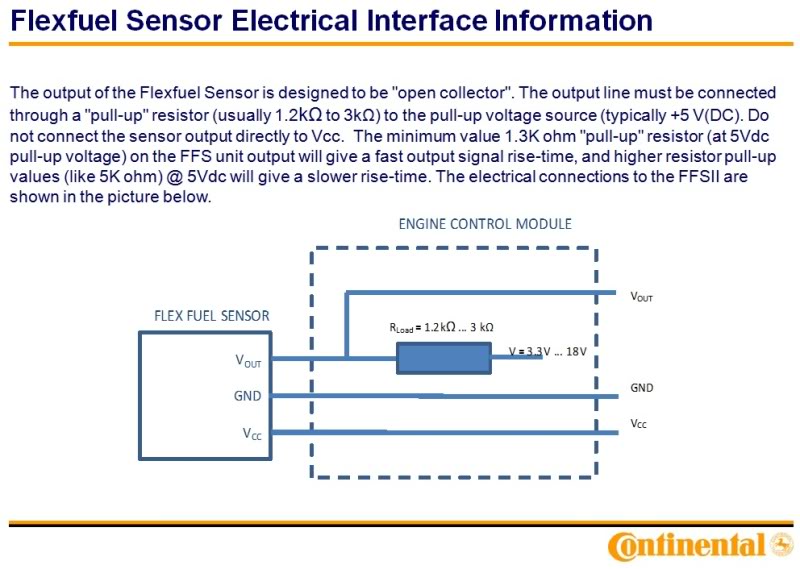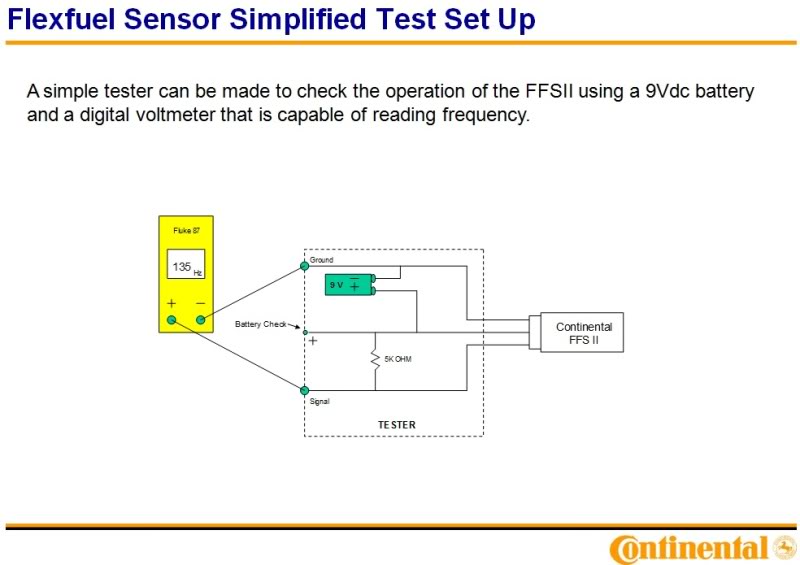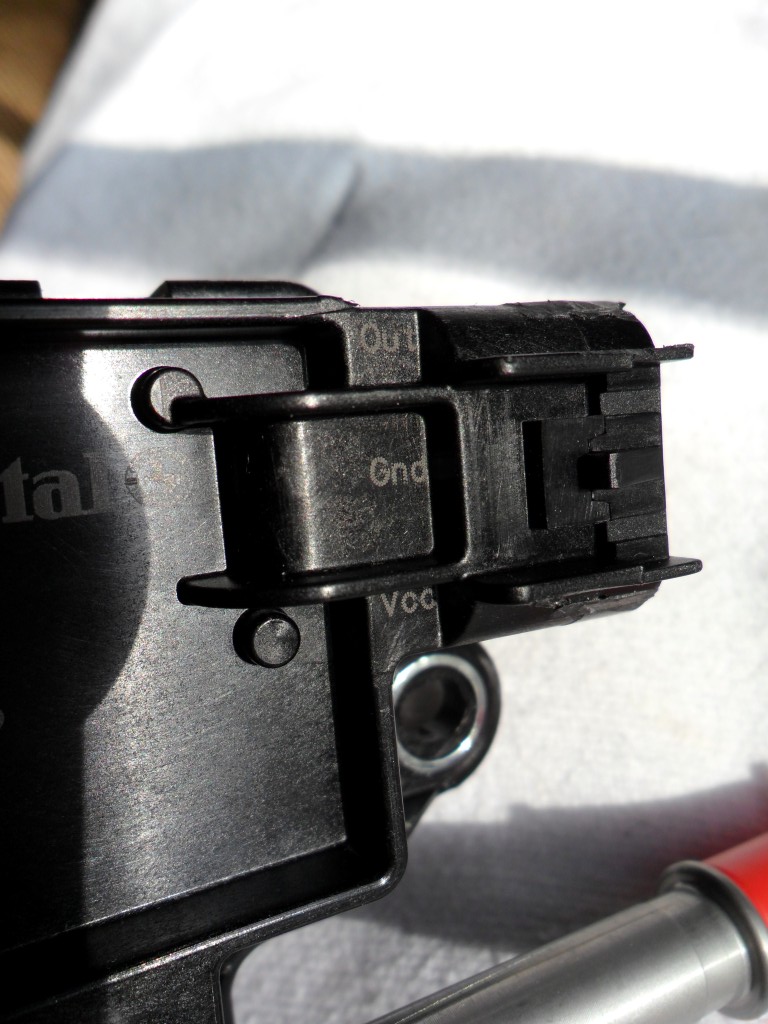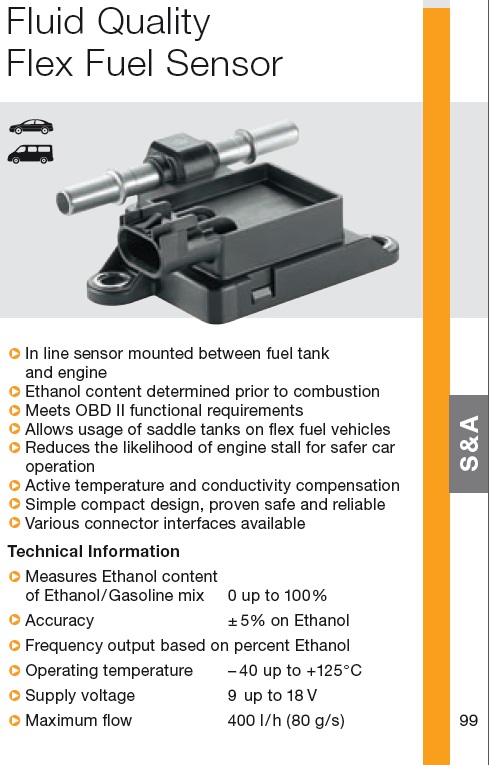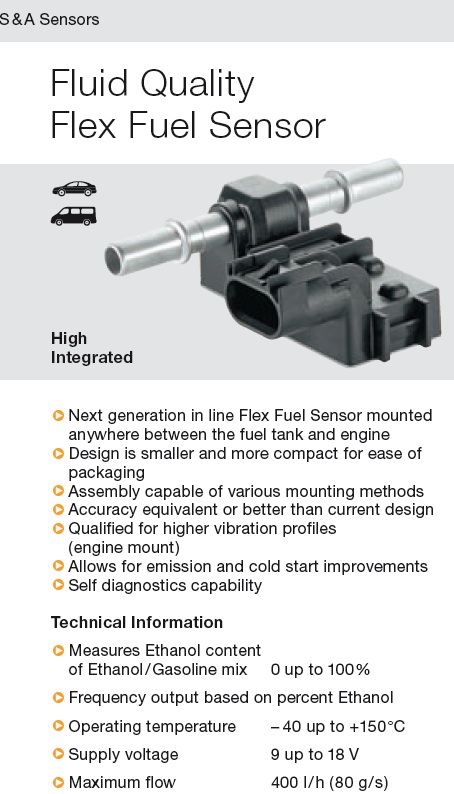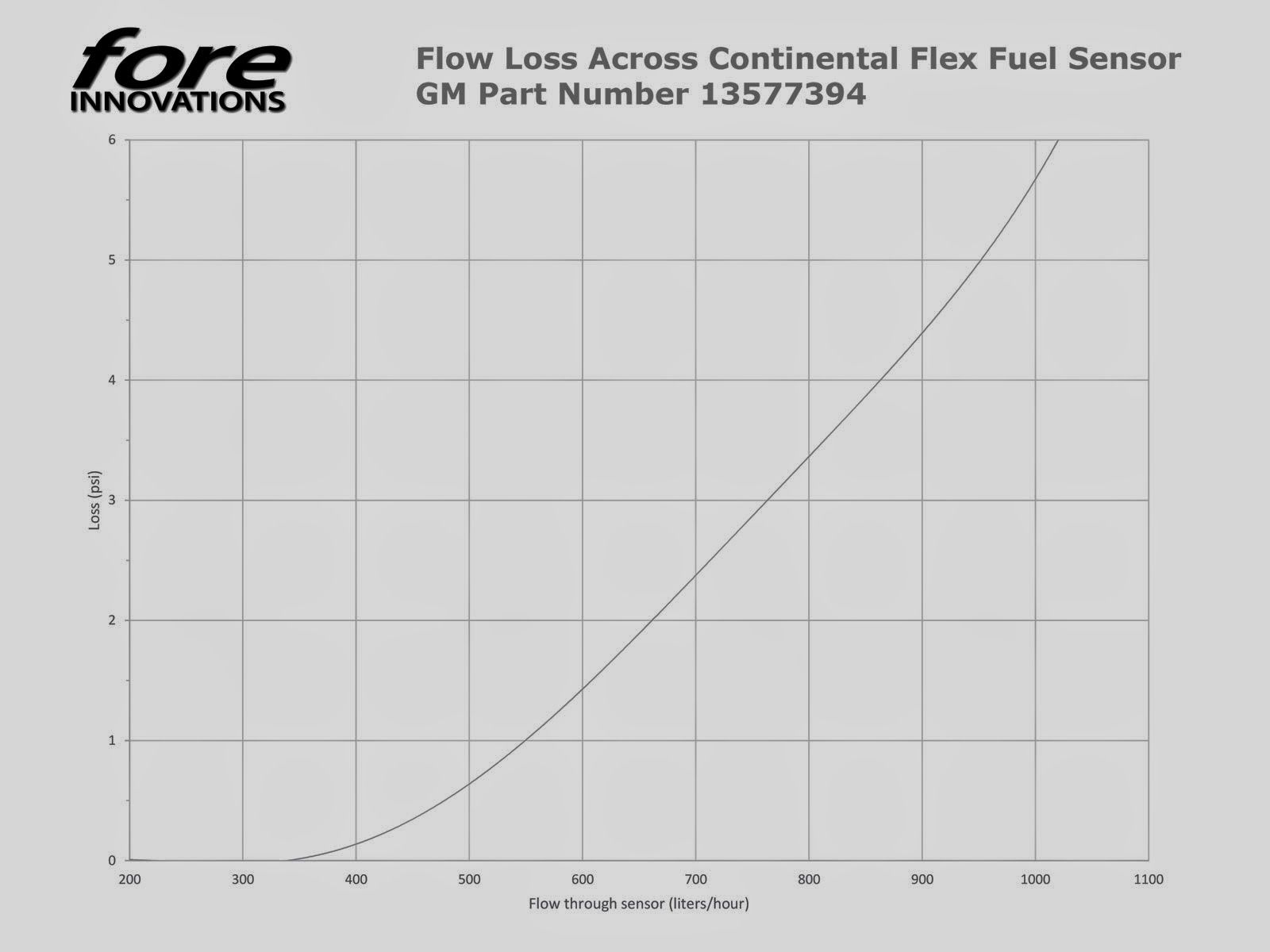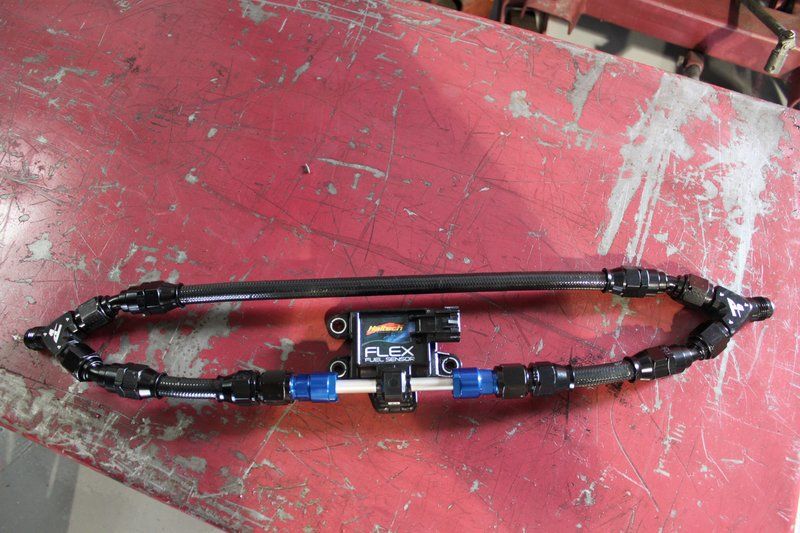E85 Continental Flex Fuel Sensor Info
#1
Thread Starter
Joined: Apr 2014
Posts: 18,642
Total Cats: 1,866
From: Beaverton, USA
This is blatantly stolen from an MR2 forum. Wanted it copied here in case the other link went down for some reason.
Affordable Flex Fuel Sensor - MR2 Owners Club Message Board
Affordable Flex Fuel Sensor - MR2 Owners Club Message Board
I was going to purchase the Haltech Flex Fuel Sensor to use with my Haltech PS1000, but through some searching found that they are just rebranding an OEM sensor and marking the price up. I found that Dynosty is also selling this OEM sensor without the Haltech sticker for $199 (compared to $232 from Haltech).
Through a little more searching, I found the sensor is actually made by Continental and is used in some of the newer GM and Holden vehicles.. and can be ordered from any GM dealership for MUCH less than Haltech.
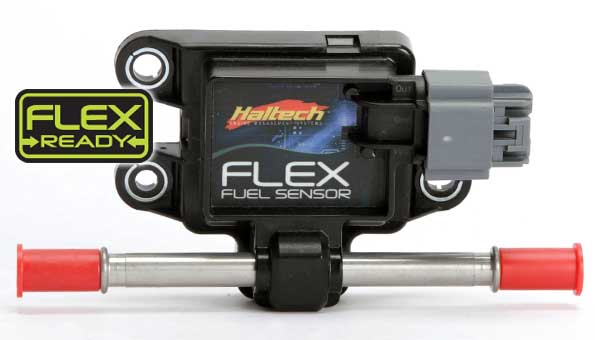
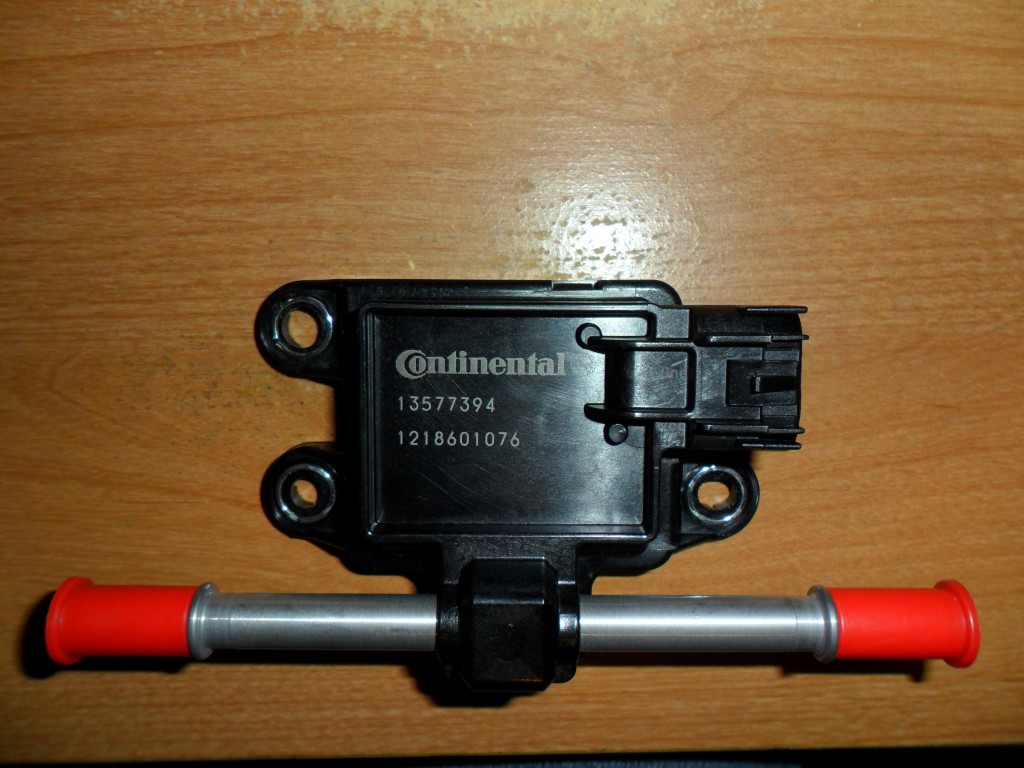
The only obstacle after obtaining the sensor through a GM dealer is getting the connector for it. Haltech charges $38 for the connector and terminals, Dynosty will sell you the same thing, but marked up to $50. I contacted Continental and was able to get their source for the connector. However, the connector is not available in small quantities. I did find another connector that works if you remove two tabs from the sensor side (I found that Haltech does this also).
Here are before and after pictures of removing the tabs:
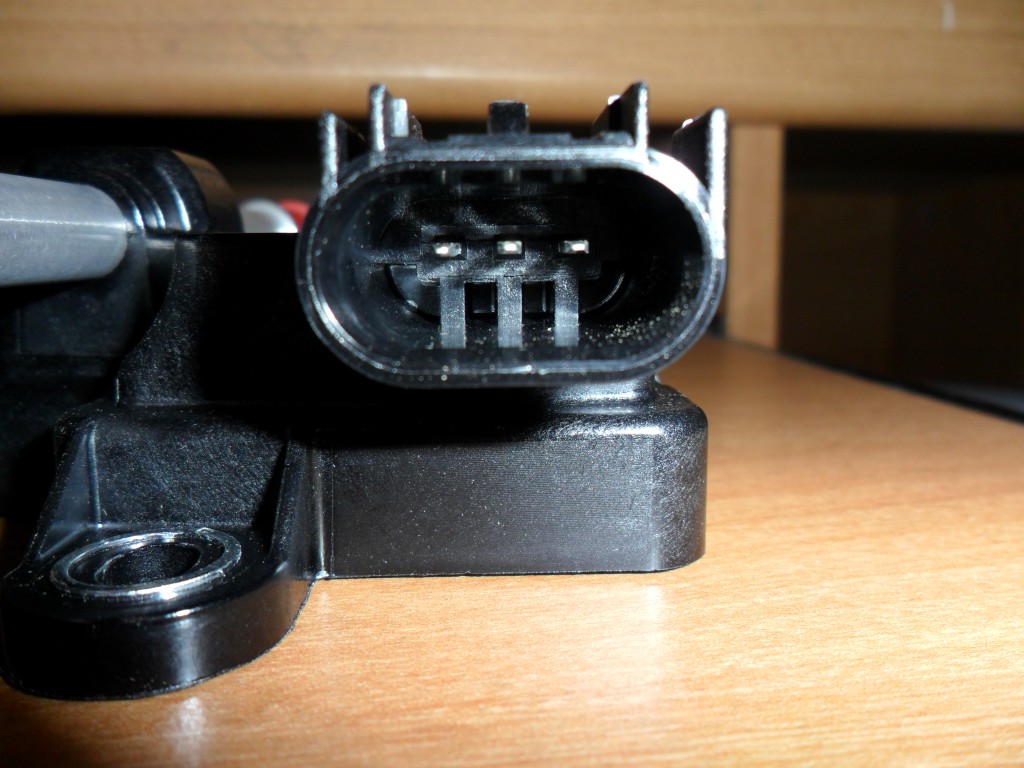
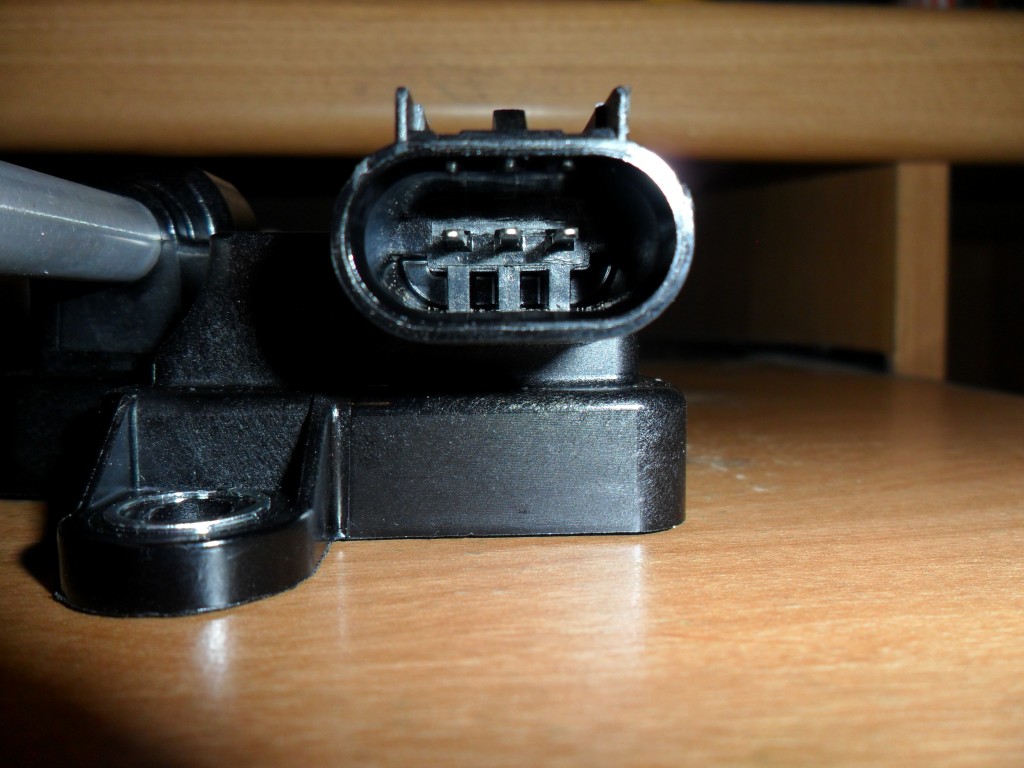
The new connector (that costs less than $2) fits great.
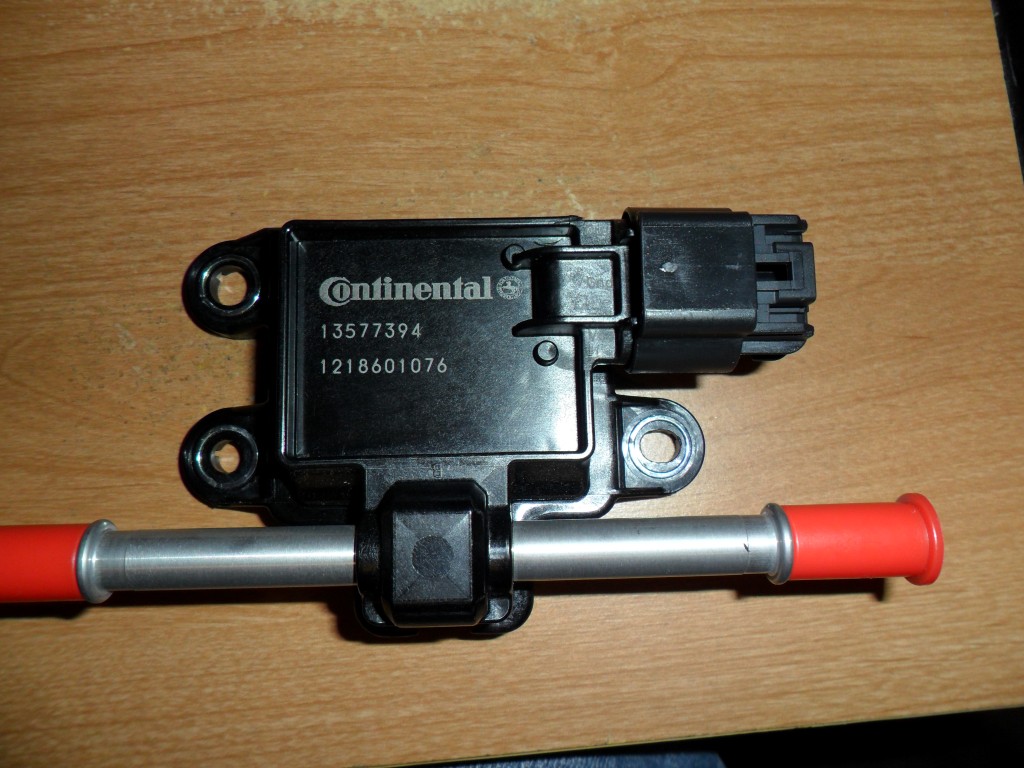
Through a little more searching, I found the sensor is actually made by Continental and is used in some of the newer GM and Holden vehicles.. and can be ordered from any GM dealership for MUCH less than Haltech.


The only obstacle after obtaining the sensor through a GM dealer is getting the connector for it. Haltech charges $38 for the connector and terminals, Dynosty will sell you the same thing, but marked up to $50. I contacted Continental and was able to get their source for the connector. However, the connector is not available in small quantities. I did find another connector that works if you remove two tabs from the sensor side (I found that Haltech does this also).
Here are before and after pictures of removing the tabs:


The new connector (that costs less than $2) fits great.

Here is the information you need to buy all this.
From GM Parts Direct: Your direct source for Genuine GM Parts (or any wholesale GM website):
Flex Fuel Sensor QTY:1, part# 13577394 $66.00
From Mouser Electronics - Electronic Components Distributor
Delphi GT 150 series connector QTY:1, part # 13519047 $1.62
13519047 Delphi Connection Systems | Mouser
Delphi GT 150 series Terminals QTY:3, Gold part# 15326427 $0.41 each Tin part# 15326264 $0.10 each
Gold: 15326427 Delphi Connection Systems | Mouser
Tin: 15326264 Delphi Connection Systems | Mouser
Delphi Loose Cable Seal QTY:3, part# 15366021 $0.06 each
15366021 Delphi Connection Systems | Mouser
TOTAL: $68.10 (before shipping)
Here is the part# for an adapter to run a 6AN to the quick disconnect lines on the sensor:
Russell 6AN to 3/8 in Hard Tube Push-on EFI Fitting - Part# 640853 $15-$20
There have been reports of this type of fitting leaking. Use the screw on kind instead. http://www.speedwaymotors.com/LS1-LT...lue,59475.html
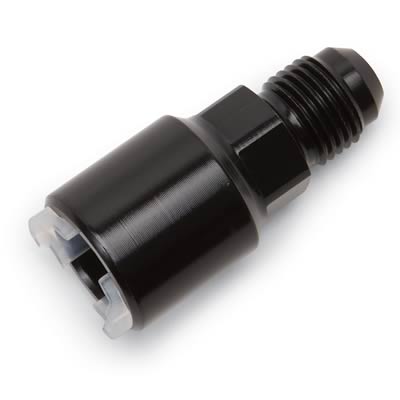
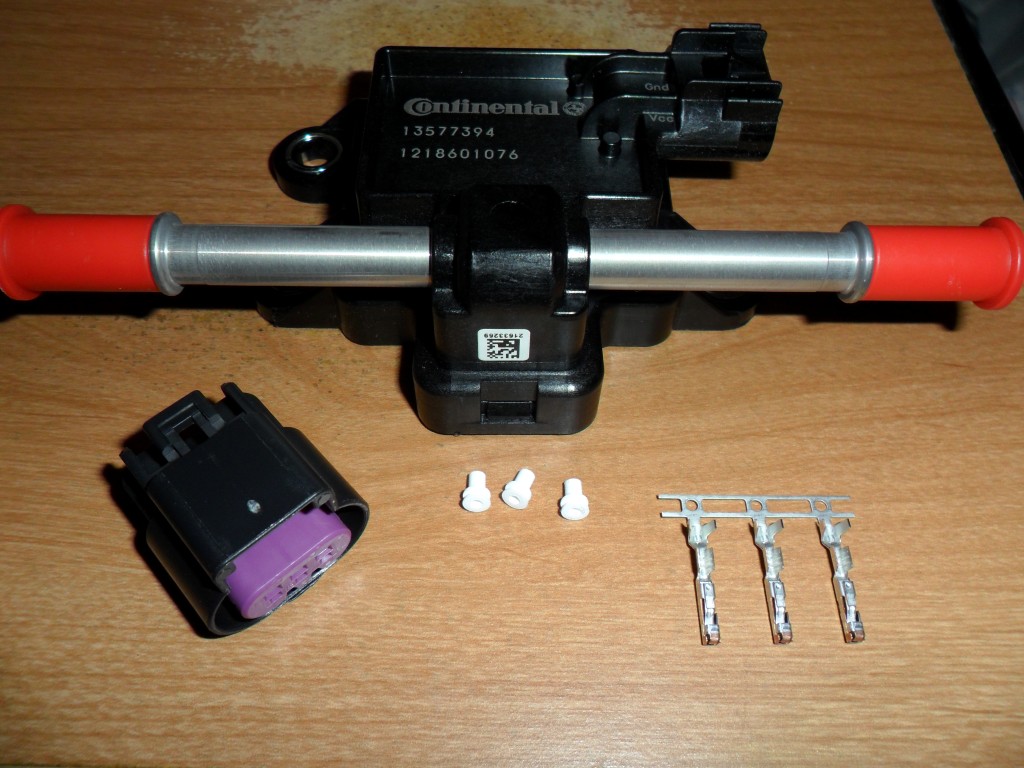
From GM Parts Direct: Your direct source for Genuine GM Parts (or any wholesale GM website):
Flex Fuel Sensor QTY:1, part# 13577394 $66.00
From Mouser Electronics - Electronic Components Distributor
Delphi GT 150 series connector QTY:1, part # 13519047 $1.62
13519047 Delphi Connection Systems | Mouser
Delphi GT 150 series Terminals QTY:3, Gold part# 15326427 $0.41 each Tin part# 15326264 $0.10 each
Gold: 15326427 Delphi Connection Systems | Mouser
Tin: 15326264 Delphi Connection Systems | Mouser
Delphi Loose Cable Seal QTY:3, part# 15366021 $0.06 each
15366021 Delphi Connection Systems | Mouser
TOTAL: $68.10 (before shipping)
Russell 6AN to 3/8 in Hard Tube Push-on EFI Fitting - Part# 640853 $15-$20
There have been reports of this type of fitting leaking. Use the screw on kind instead. http://www.speedwaymotors.com/LS1-LT...lue,59475.html


The part number for the above sensor, the smallest I've seen thus far is, 13577429 and is the cheapest so far, running about $44 from GMPartsDirect. Not sure if they will switch to this sensor on all new flex fuel cars, but it is the latest model and introduced on the 2012+ Chevy Equinox Flex Fuel.
To recap:
Small - 13577429: $44
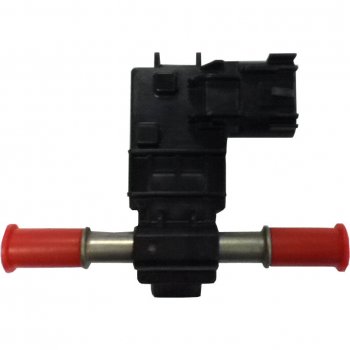
Medium - 13577379: $66
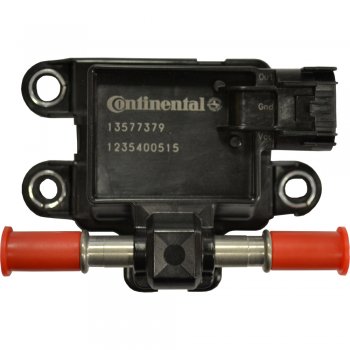
Large - 13577394: $66

Also there is the sensor harness for it if you don't want to modify the connector:
8" Harness - 13352241: $8
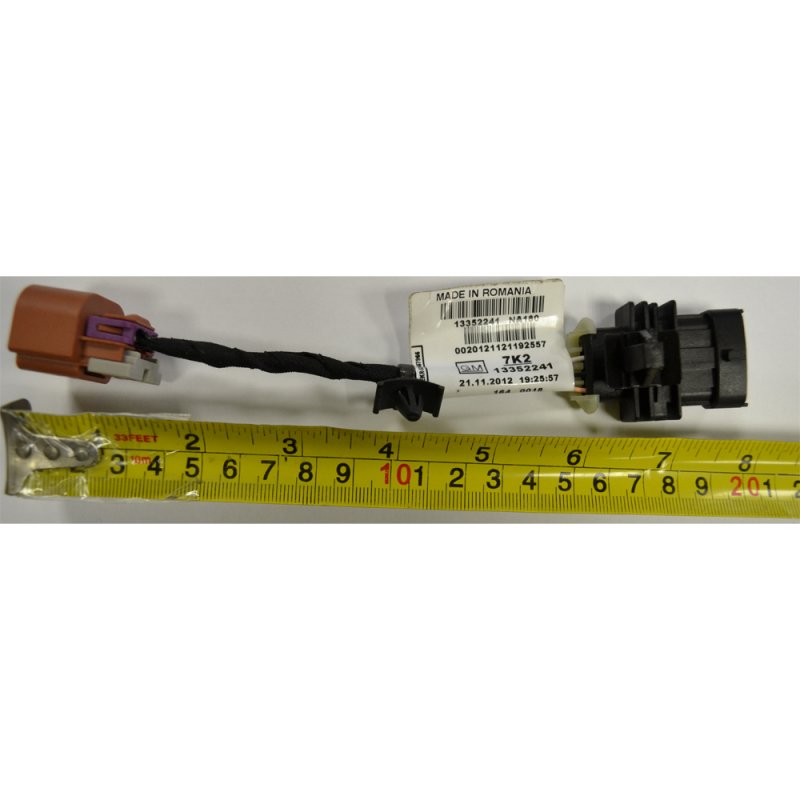
Differences between the sensors: The large and medium sensor is the same, only the tube length differs. The tube length between the medium and small sensor is the same, but the sensor is different. Of note is that we still need to find out if the output from the small sensor is the same as the medium and large sensor, and that the small sensor will have to be attached in your own way as it does not have the bolt holes that the medium and large sensor have.
How the flex fuel sensor works: Clemson Vehicular Electronics Laboratory: Flex Fuel Sensors
Also, just so you have the info, the old all metal flex fuel sensor's part number is 12570260 and run about $326. I've seen companies out there selling flex fuel kits with this sensor charging $650 for the sensor and harness alone... tsk tsk... The only advantage of the all metal unit is that the output for it is well documented and linear (and should be available relatively easily in junk yards as it is of 2000-2005 vintage). The output for the new sensor just needs to be documented now that we have the info from Continental.
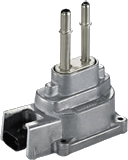
To recap:
Small - 13577429: $44

Medium - 13577379: $66

Large - 13577394: $66

Also there is the sensor harness for it if you don't want to modify the connector:
8" Harness - 13352241: $8

Differences between the sensors: The large and medium sensor is the same, only the tube length differs. The tube length between the medium and small sensor is the same, but the sensor is different. Of note is that we still need to find out if the output from the small sensor is the same as the medium and large sensor, and that the small sensor will have to be attached in your own way as it does not have the bolt holes that the medium and large sensor have.
How the flex fuel sensor works: Clemson Vehicular Electronics Laboratory: Flex Fuel Sensors
Also, just so you have the info, the old all metal flex fuel sensor's part number is 12570260 and run about $326. I've seen companies out there selling flex fuel kits with this sensor charging $650 for the sensor and harness alone... tsk tsk... The only advantage of the all metal unit is that the output for it is well documented and linear (and should be available relatively easily in junk yards as it is of 2000-2005 vintage). The output for the new sensor just needs to be documented now that we have the info from Continental.

Any help? I am trying to pop on these 3/8 tube to -6AN fittings. The fitting on the bottom is on, but it pops off fairly easily because it isnt really catching the bumps on the tube. The top tube in the photo I have the white piece with red arrow all the way back past the bump on the tube so it is hard to remove, but I cannot slide the fitting back all the way. The tube seems to fat and wont fit further into the fitting. Am I supposed to sand down the tube some? Any ideas, or is the bottom one correct? Doesnt seem good at all though..
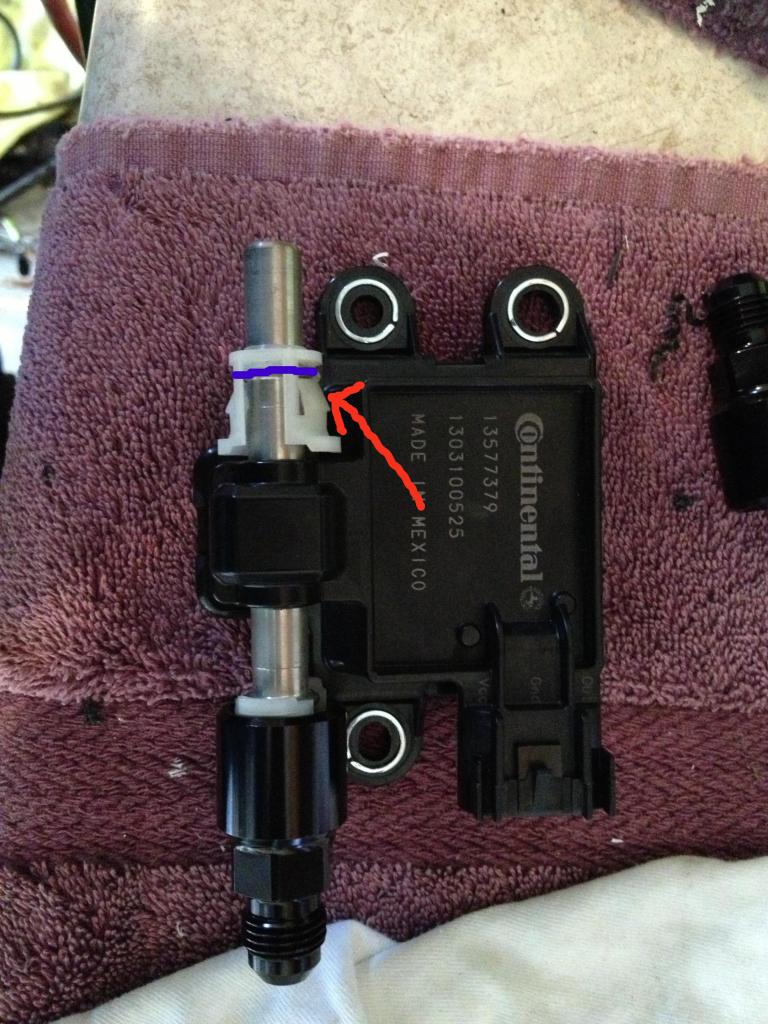

#6
Thread Starter
Joined: Apr 2014
Posts: 18,642
Total Cats: 1,866
From: Beaverton, USA
AN clip on fittings shouldn't be used. There are reports of them leaking. Use the screw on ones.
Shorter tube ones are usually cheaper, at least mine was. The screw on one's fit fine on mine.
I have a couple threads on msextra about flex fuel and they are ****** vague about the flex input. But they say it is good to go.
Here is the ms3x manual page for flex fuel.
MS3XV30_Hardware-1.4 page 35
I will take pics of my setup sans install tonight. I believe I linked the hardware elsewhere.
Shorter tube ones are usually cheaper, at least mine was. The screw on one's fit fine on mine.
I have a couple threads on msextra about flex fuel and they are ****** vague about the flex input. But they say it is good to go.
Here is the ms3x manual page for flex fuel.
MS3XV30_Hardware-1.4 page 35
I will take pics of my setup sans install tonight. I believe I linked the hardware elsewhere.
#8
Thread Starter
Joined: Apr 2014
Posts: 18,642
Total Cats: 1,866
From: Beaverton, USA
I did too lol. I'm guessing 5v would be fine, but there is some sort of internal regulator to drop 12v to 5v. Its probably more than a voltage divider because it accepts 9v to 18v.
The signal output is 0-5v which makes me think that the internal sensor actually uses 5v. But no way to confirm that without tearing into one.
The signal output is 0-5v which makes me think that the internal sensor actually uses 5v. But no way to confirm that without tearing into one.
#9
Thread Starter
Joined: Apr 2014
Posts: 18,642
Total Cats: 1,866
From: Beaverton, USA
I retract that last statement. The continental flex fuel sensor is an open collector sensor. So it will only output 0-5v if you have a 5v pullup. And uses a pullup to 5v in the megasquirt. I wish I still had mine out so I could test what value it uses because it is not specified in the schematics. It looks like the resistor value can actually change the characteristics of the signal.
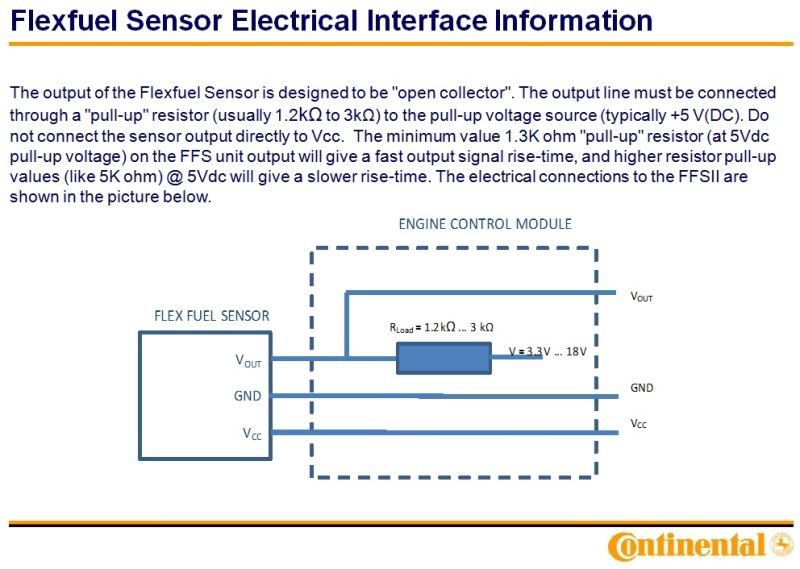

#10
Thread Starter
Joined: Apr 2014
Posts: 18,642
Total Cats: 1,866
From: Beaverton, USA
Here is some more info about how they actually measure ethanol content
Clemson Vehicular Electronics Laboratory: Flex Fuel Sensors
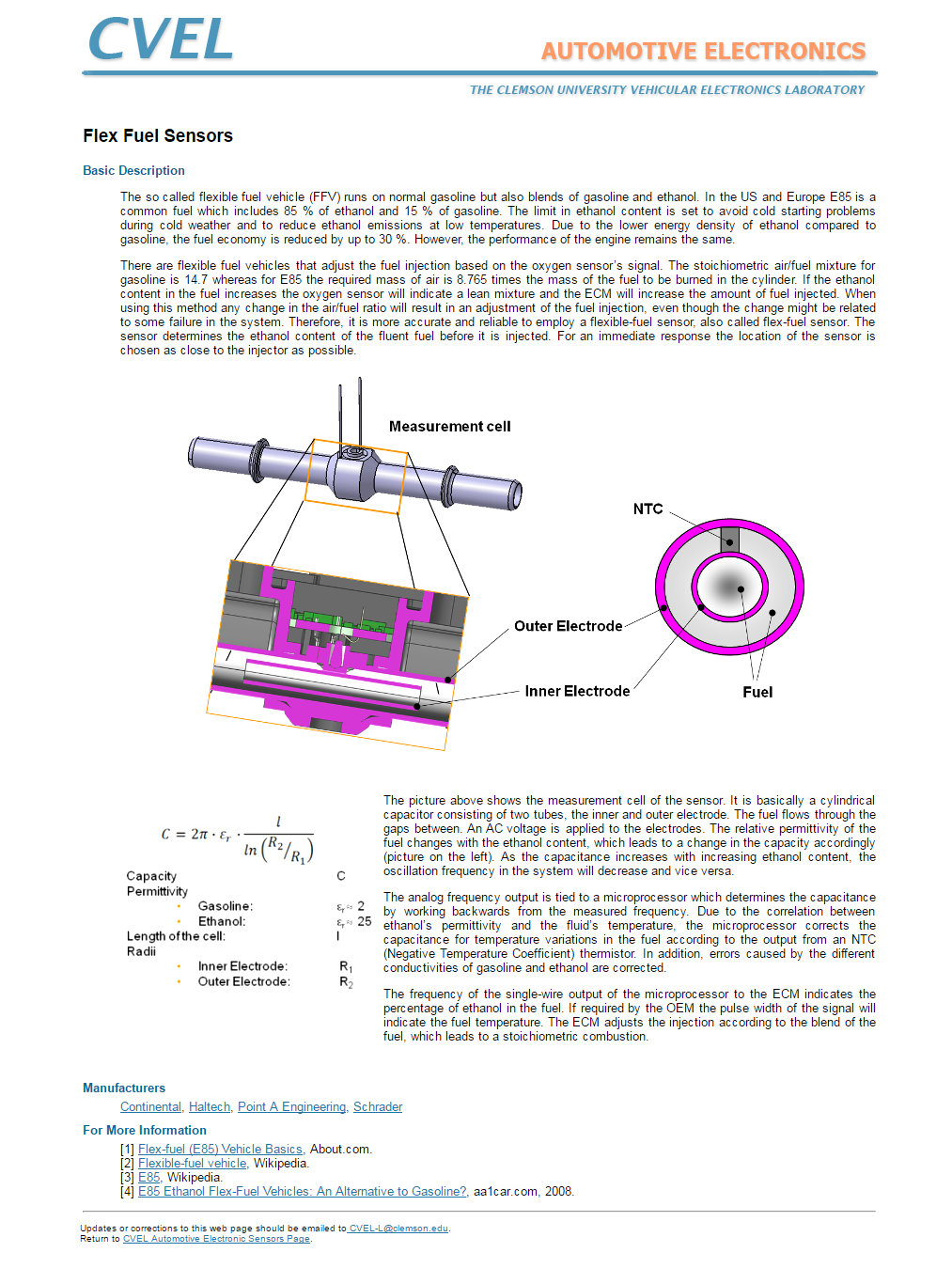
Clemson Vehicular Electronics Laboratory: Flex Fuel Sensors

#13
Thread Starter
Joined: Apr 2014
Posts: 18,642
Total Cats: 1,866
From: Beaverton, USA
While it seems like 5v should work. If you are doing a new install you should use 12v based on the specifications for the sensor.
Maybe @Joe Perez could clue us into why an open collector sensor spec'd for 12v could work of 5v. I need to go do real work instead of flex fuel sensor research.
Maybe @Joe Perez could clue us into why an open collector sensor spec'd for 12v could work of 5v. I need to go do real work instead of flex fuel sensor research.
#14
Joined: Sep 2005
Posts: 33,556
Total Cats: 6,933
From: Chicago. (The less-murder part.)
Well, [utag] is clearly working. 
Are we talking about the sensor you pictured in post #9? Because that sheet clearly shows that it'll accept any pullup voltage from 3.3 to 18v. And, in post #1, one of the images you posted (the one with the multimeter) clearly indicates to us that the sensor's output is variable in frequency, not voltage. This is pretty much the de-facto standard in fuel-composition sensors.
Open-collector outputs are really simple circuits, barely more intelligent than a mechanical relay. They're just using a transistor to provide a variable closure to ground. And in most modern applications, that closure is varied by pulsewidth modulation while operating the transistor in full-saturation intermittently, rather than in the linear region continuously.
So, within reason, they don't really care what the pullup voltage is.
Like, imagine that we're operating the output at a *really* low frequency, like 0.1 hz (one cycle every ten seconds.) And on the output, we have a light bulb pulled up to some voltage. It doesn't matter in the least what that voltage is (provided that it doesn't exceed the rating of the light bulb). If the output duty cycle is 50%, you'll be able to easy see "oh, the light is on for 5 seconds and then off for 5 seconds" regardless of whether it's a 12v lamp or a 120v lamp.
That's all that's happening with the sensor in real life, it's just a lot faster.

Maybe @Joe Perez could clue us into why an open collector sensor spec'd for 12v could work of 5v. I need to go do real work instead of flex fuel sensor research.
Open-collector outputs are really simple circuits, barely more intelligent than a mechanical relay. They're just using a transistor to provide a variable closure to ground. And in most modern applications, that closure is varied by pulsewidth modulation while operating the transistor in full-saturation intermittently, rather than in the linear region continuously.
So, within reason, they don't really care what the pullup voltage is.
Like, imagine that we're operating the output at a *really* low frequency, like 0.1 hz (one cycle every ten seconds.) And on the output, we have a light bulb pulled up to some voltage. It doesn't matter in the least what that voltage is (provided that it doesn't exceed the rating of the light bulb). If the output duty cycle is 50%, you'll be able to easy see "oh, the light is on for 5 seconds and then off for 5 seconds" regardless of whether it's a 12v lamp or a 120v lamp.
That's all that's happening with the sensor in real life, it's just a lot faster.
#16
Joined: Sep 2005
Posts: 33,556
Total Cats: 6,933
From: Chicago. (The less-murder part.)
Dumb luck?
Internally, most microprocessor-based stuff is going to be internally regulated down to some relatively low voltage. 5, 3.3 and 1.8v are the most common I/O voltages for cheap micros.
I'm just gonna guess that this one is sufficiently robust that it can tolerate whatever drop below its internal Vcc is being caused by the voltage regulator when it receives a 5v supply. I'm sure the regulator isn't spec'd to work that low, but most components will work beyond their specs in both the positive and negative directions.
I wouldn't do it if it were my car. Who knows if it'll start getting unreliable as it heats up, or as it ages, or even if it's operating outside of spec right now, with regard to the frequency vs. ethanol chart.
#18
That's a very conservative estimate, based on the published data I've seen. If you're running 400lph through the sensor (published maximum flow), that's ~6.67 liters per minute, or ~6,667cc/min, which is enough to max out four ID1300s at 90psi of differential pressure. That's way north of 500whp, even on E85, and that assumes you're feeding 100% of the fuel through the sensor, and that the sensor is in the feed line.
#19
Thread Starter
Joined: Apr 2014
Posts: 18,642
Total Cats: 1,866
From: Beaverton, USA
That's a very conservative estimate, based on the published data I've seen. If you're running 400lph through the sensor (published maximum flow), that's ~6.67 liters per minute, or ~6,667cc/min, which is enough to max out four ID1300s at 90psi of differential pressure. That's way north of 500whp, even on E85, and that assumes you're feeding 100% of the fuel through the sensor, and that the sensor is in the feed line.
#20
Been using this Conti sensor for a couple of years. Bought a long tube version with a harness pigtail for something like $75 shipped off of eBay. Works exactly as expected.
Fuel lines slip-fitted and hose-clamped in place over the tubes, sensor floatining in space between my regulator (on the firewall) and the OEM return line.
Fuel lines slip-fitted and hose-clamped in place over the tubes, sensor floatining in space between my regulator (on the firewall) and the OEM return line.





